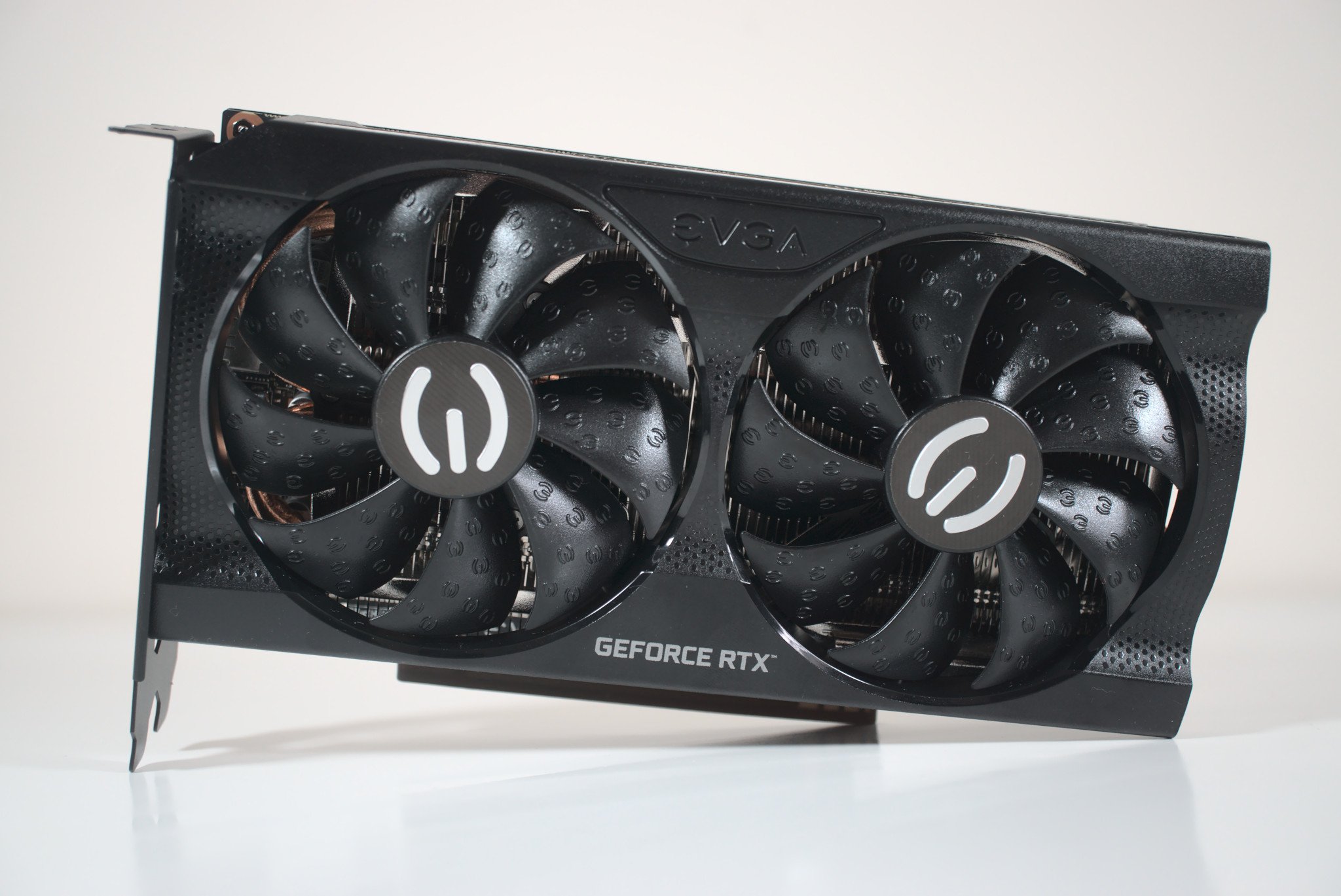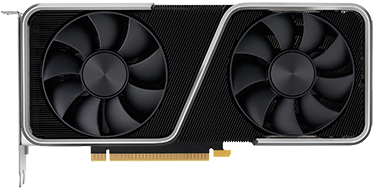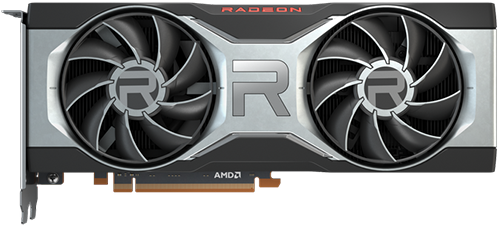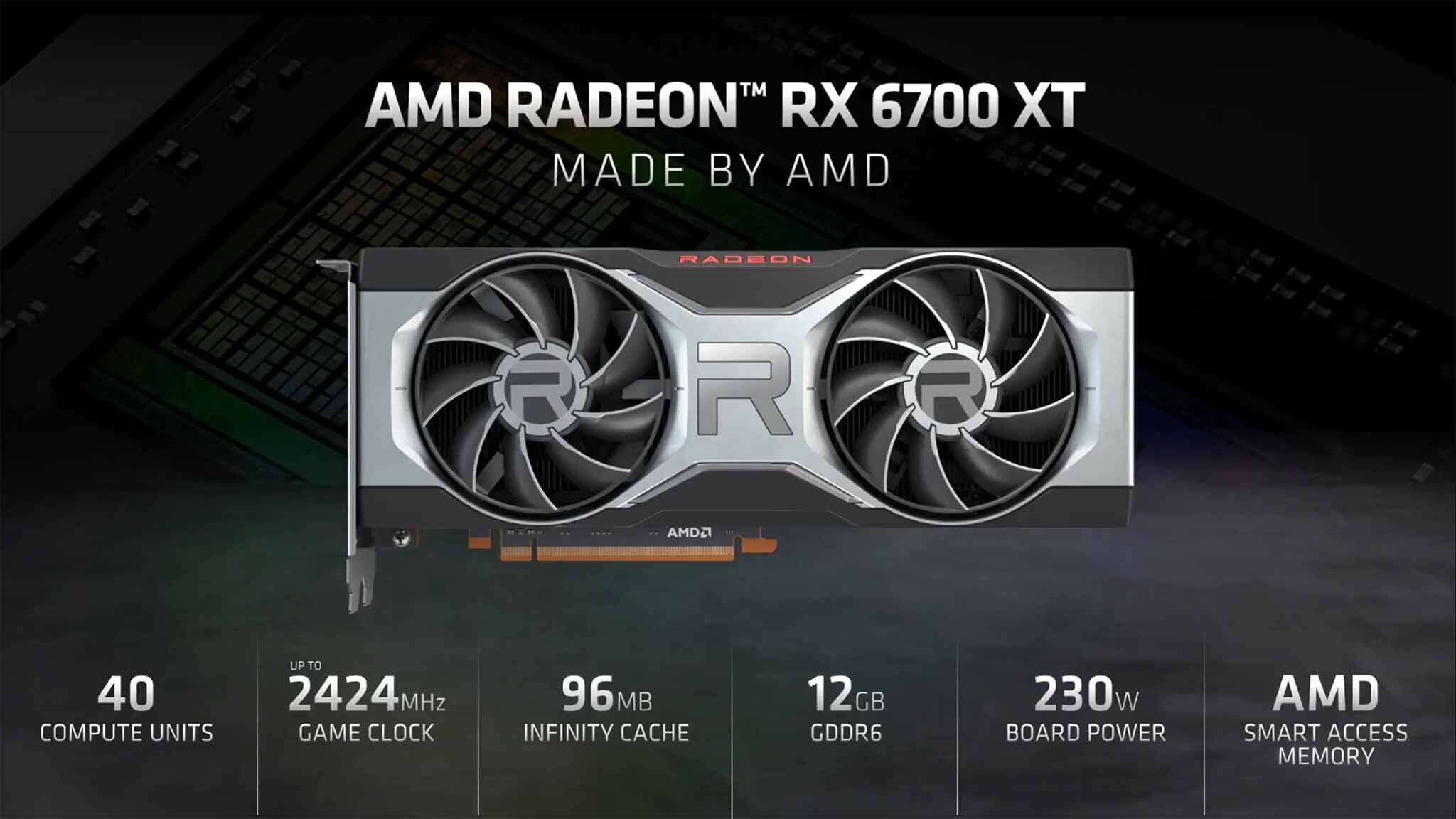

Ray Tracing and DLSS
The NVIDIA GeForce RTX 3060 Ti costs less than the RX 6700 XT at around $400 and delivers DLSS and superior ray tracing. However, raw QHD and 4K performance doesn't quite compare.
Pros
- Strong ray tracing performance
- DLSS boosts frame rates
- Excellent QHD performance
- Should cost less
- NVIDIA Broadcast
Cons
- Less VRAM
- Not as powerful with raw QHD and 4K gameplay

Awesome QHD Power
AMD's Radeon RX 6700 XT is a high-end GPU that excels at 1440p and can even put up solid numbers at 4K. It doesn't offer DLSS and ray tracing support isn't as good, but it's still a leading card at about $480 MSRP.
Pros
- Stellar QHD performance
- 16GB of VRAM
- Is capable of ray tracing
Cons
- No DLSS alternative
- List price costs more
- Ray tracing support not as good
The current GPU market, from budget picks to the best graphics card options out there, is volatile. Neither of these cards is easy to find, and when in stock they generally cost far more than list price. Nevertheless, these are both GPUs best suited for FHD or QHD with a bit of 4K tossed in for good measure. If you're wondering which one is right for your custom PC build, we compare features and performance.
NVIDIA RTX 3060 Ti vs. AMD RX 6700 XT: Tech specs
| Header Cell - Column 0 | NVIDIA RTX 3060 Ti | AMD RX 6700 XT |
|---|---|---|
| Architecture | Ampere | RDNA 2 |
| Shader/stream | 4,864 | 2,560 |
| Tensor/texture | 152 | 160 |
| Clock | 1.41GHz | 2.3GHz |
| Boost clock | 1.67GHz | 2.5GHz |
| Memory | 8GB GDDR6 | 12GB GDDR6 |
| Bus width | 256-bit | 192-bit |
| Transistors | 17.4B | 17.2B |
| Node | 8nm | 7nm |
| TDP | 200W | 230W |
| Recommended PSU | 600W | 650W |
| Slot size | 2 | 2 |
Performance and features
The NVIDIA RTX 3060 Ti and the AMD RX 6700 XT both sit close to each other on the GPU market, coming in as options for those who want to focus on 1080p (FHD) and 1440p (QHD) gaming. In an ideal world without bot scalping and stock shortages, the RTX 3060 Ti reference cards would cost around $400. That's quite a bit less than the RX 6700 XT with its reference cards priced around $480. If you can find either of these GPUs near this price, snap it up quickly because it won't last long.
In terms of raw performance without any extra features like ray tracing and DLSS, the AMD RX 6700 XT should deliver marginally better performance in most modern titles. The numbers will differ depending on the game and resolution; you might see a 10% FPS boost from AMD's card in one title while the NVIDIA card will win out in another, albeit with a smaller gap.
Where the NVIDIA RTX 3060 Ti really takes off is when ray tracing gets involved. AMD added ray tracing capabilities to its RDNA 2 GPUs, but support isn't nearly as mature and performance suffers significantly more when enabled. If you're set on enjoying games with more natural lighting, NVIDIA's hardware is still the way to go. And in many cases, Deep Learning Super Sampling (DLSS) is standing by to boost performance. AMD is said to be working on a DLSS competitor called Super Resolution, but so far nothing has come to market. More information about these technologies can be found in our guide to ray tracing and DLSS.

NVIDIA Broadcast is another exclusive feature that is extremely handy for streamers and those who are often involved in video meetings. Broadcast is an app that employs AI learning to enrich video and audio coming from your PC. It can eliminate background noise, background video, and it can track movement. It works incredibly well and it's something AMD doesn't currently have an answer for.
But AMD isn't without its own tricks. Infinity Cache arrived with RDNA 2 GPUs, adding a dense 96MB L3 cache that improves memory latency. The RX 6700 XT also offers optional Smart Access Memory (SAM) when combining the GPU with an AMD 500-series motherboard and Ryzen 3000 or 5000 processor (CPU). This is essentially resizable BAR support and can, in many cases, offer a boost to FPS. Whereas this was originally exclusive to AMD, NVIDIA has now added resizable BAR support to its RTX 30-series GPUs.
As a bottom line, the RX 6700 XT is a solid pick that sits somewhere between the RTX 3060 Ti and RTX 3070 in terms of raw performance. If you want a GPU that can put up strong numbers — especially at 1440p — and don't care about ray tracing and DLSS, it will serve you well. However, the RTX 3060 Ti is an impressive card that brings the extra NVIDIA benefits at a lesser list price. If you don't mind losing a few FPS for the addition of robust ray tracing and DLSS, the RTX 3060 Ti should make a great choice for your next upgrade or build.
All the latest news, reviews, and guides for Windows and Xbox diehards.
Go with NVIDIA for DLSS and better ray tracing
The RTX 3060 Ti comes in at a lower list price and offers more mature ray tracing capabilities backed up by DLSS AI enhancements. This is no doubt the GPU most people will look out for unless they absolutely want the extra raw performance from the RX 6700 XT. Check out our guide on where to buy NVIDIA RTX 30-series graphics cards for more information.
The RX 6700 XT brings slightly better raw performance
AMD's RX 6700 XT is still a super GPU that can handle itself well at 1080p and 1440p. This is the way to go if you care less about ray tracing and DLSS and just want as much raw performance as possible. Check out our guide on where to buy AMD Radeon RX 6000 graphics cards for more info.

Cale Hunt brings to Windows Central more than nine years of experience writing about laptops, PCs, accessories, games, and beyond. If it runs Windows or in some way complements the hardware, there’s a good chance he knows about it, has written about it, or is already busy testing it.
